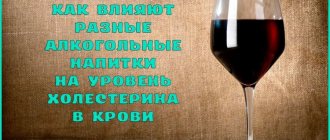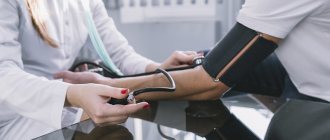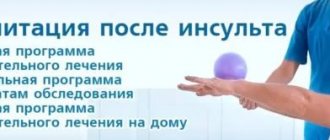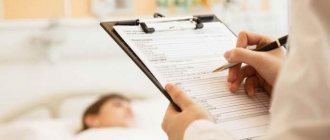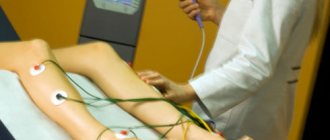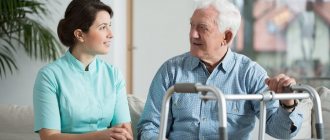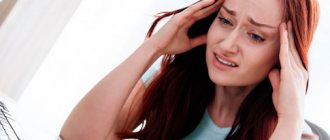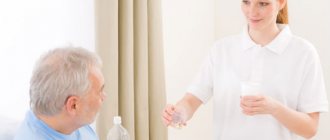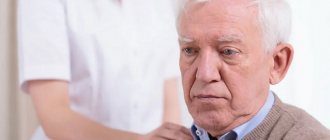Ischemic stroke is one of the most pressing medical and social problems. Both in the acute period of stroke and after it, patients have swallowing disorders, which requires a special diet. At the Yusupov Hospital, doctors provide treatment and rehabilitation for patients with ischemic stroke. A personal nutritionist will select meals to provide the body with the necessary nutrients.
Proper nutrition after a stroke
One of the main causes of stroke is atherosclerosis. We develop this insidious disease gradually over many years. Young people do not take the threat of stroke seriously. Age-related problems seem too distant and insignificant. A healthy and strong body forgives us a lot. Sleepless nights, alcohol, an abundance of fatty and sweet foods are given to us without any consequences. Over the years, people acquire bad habits and cannot imagine life without coffee and sweets. Against the backdrop of adrenaline stress, there is a feeling that all these “harmful things” are part of modern life, and in general, why pick on nutrition if “living in general is harmful.”
You have to pay for the mistakes of youth in adulthood. Most of us experience the first signs of a stroke after the age of 40. At an appointment with a cardiologist and neurologist, people for the first time realize what a threat hangs over them and their families. You can't go back to the past, but you can start correcting the situation right now. With age, health goes away, but wisdom, patience and endless love for life come.
Motor rehabilitation
The return of motor skills should begin as early as possible. Various exercises are used for rehabilitation after a stroke at home. Some of them can be done while the patient is in a supine position. These include:
- raising and lowering, bending and straightening the joints of the legs and arms;
- rotation of the arms at the wrist and elbow joints;
- clenching and unclenching fists;
- foot movements.
If the patient cannot yet sit or roll over independently, it is necessary to periodically change the position of his body. An assistant helps the patient turn over by approaching him from the affected side and holding him by the healthy shoulder, knee or hip.
When the patient begins to sit down, a special device on the functional bed will help him with this, by which he will pull himself up. You can do the following exercises while sitting:
- throwing the head back, tilting the head, rotating;
- stretching and bending the body forward;
- arching in the back, retraction of the shoulder blades;
- rotation of the arms in the shoulder joints;
- alternate leg lifts.
If a person can stand, the list of recommended exercises expands - the patient can additionally perform rotations and arm swings, bending, arm extensions with an expander, and walking in place.
Sitting down, changing positions in bed, getting up and walking if the patient was initially in a supine position is possible only after the doctor’s permission.
To improve coordination of movements, you should move your eyes in different directions, throw small objects at the target, gradually increasing their volume and mass and moving the target away. As the patient's condition improves, swinging movements in large joints, turns and tilts of the body are added.
Puzzles, construction sets, modeling from plasticine, origami, making appliques or regular copybooks are perfect for training fine motor skills.
Diet after a stroke has a number of features and rules
In order to regain strength, a person needs energy. The body must use energy correctly. The process of digestion and assimilation also requires strength and resources, so try not to overload your stomach.
- Do not eat hot or cold food. The temperature of food should be close to body temperature.
- Avoid foods containing cholesterol.
- Drink 1.5 - 2 liters of water daily depending on the time of year.
- Eat often, but little by little. Eat slowly and chew every bite of food thoroughly. Remember, the digestion process begins in the mouth.
- Avoid alcohol and nicotine completely.
- Heat foods. This rule is due to the fact that the body requires more time and effort to digest raw food.
Despite a strict diet, food should be varied. With the right approach, every piece of healthy food turns into a brick for restoring the body.
- Meat of lean and dietary varieties restores the nervous system and promotes muscle gain. Eliminate red fatty meat and offal.
- Vegetables, fruits, and greens saturate the body with essential vitamins and microelements. It is recommended to consume at least 400 grams of boiled and baked vegetables daily.
- Low-fat fermented milk products are a source of protein and restore intestinal microflora. It is recommended to consume cottage cheese 2-3 times a week in the form of casseroles. It is forbidden to eat whole and condensed milk, as well as sharp and fatty cheeses, butter, cream and sour cream.
- Low-fat boiled fish should appear on the table of a convalescent person no more than 3 times a week and only boiled or baked. Forget about salted, smoked and fried fish, a product prepared in this way will only cause harm.
- Eating 2-3 eggs per week will help replenish your strength and energy during the recovery period. Eggs can be eaten boiled and in the form of omelettes, adding vegetables and herbs.
Causes of changes in metabolism during ischemic stroke
In patients with ischemic stroke, the digestive, respiratory, cardiovascular and urinary systems are most quickly involved in the pathological process, and multiple organ failure develops. During a stroke, the central regulatory organ suffers, which leads to a breakdown of central neurogenic control over the processes occurring in the internal organs.
Metabolic changes during stroke occur both as a result of powerful sympathetic stimulation of hormone release (glucagon, catecholamines, corticosteroids) and under the influence of local mediators. As a result of this reaction, the metabolism changes so that the body can absorb nutrients in the face of severe illness. This allows the mobilization of energy and substrates to support inflammatory and immune responses, as well as tissue regeneration. With ischemic stroke, protein deficiency develops, which ultimately leads to disruption of cell function and structure, as well as organ function.
In conditions of increased metabolism, an important role in the complex intensive care of ischemic stroke belongs to ensuring adequate nutrition using a number of methods other than regular food intake. A significant proportion of patients with ischemic cerebral stroke are unable to eat on their own, which is associated with a decreased level of consciousness or impaired swallowing function. Often the only possible way to deliver nutrients to these patients is artificial nutrition.
Diet recipes
First meal
Chicken soup with vegetables
Chicken fillet, carrots, potatoes, onions, green peas, green beans, broccoli, herbs.
Cook chicken broth. Remove the finished fillet from the broth and cut into cubes. Place potatoes in broth. Cut carrots, onions, green beans, broccoli into slices and sauté. Add fried vegetables, fillet and green peas to the boiling broth. Boil. When serving, sprinkle with herbs.
Squash soup
Vegetable broth, squash, potatoes, carrots, 2 tbsp flour. l., butter, herbs.
Peel the squash, potatoes, carrots and chop as desired. Place potatoes and carrots in hot broth. In a frying pan, mix flour with melted butter, dilute with hot broth and return to soup. 5 minutes before the end of cooking, add the squash and add parsley at the end.
Second courses
Fish meatballs
Minced fish, onion, 2 tbsp. l. rice, egg, flour, vegetable oil, sour cream.
Cook the rice. Chop or grate the onion. Add rice, onion, egg to the minced meat and mix. Form balls, roll them in flour, lightly fry, pour sour cream and simmer under the lid for 20 minutes. Serve with vegetable salad.
Fish quenelles with mashed potatoes
Minced meat (from pike perch or cod), spices for fish, egg, butter.
Add fish spices, yolk and separately beaten whites to the minced fish, mix. Form quenelles from the mixture and cook them in a saucepan in a small amount of water. Place the quenelles on a plate and pour melted butter over the mashed potatoes. Can be served with bechamel sauce.
Dessert
Cottage cheese casserole with pumpkin
Milk, semolina, eggs, cottage cheese, pumpkin, butter, sugar.
Cook semolina porridge in milk. Peel the pumpkin, simmer the pieces in oil with a little water until tender and mash well. Add cottage cheese, pumpkin, eggs and sugar to the porridge. Place the mixture on a baking sheet, level the surface, and bake until done.
What foods should you avoid?
To prevent an increase in the level of low-density lipoproteins, which enhance the formation of cholesterol plaques in blood vessels, you will have to give up your usual diet, in particular:
- fatty foods (meat, sour cream, full-fat milk, butter, cream cakes, cooking fats, mayonnaise);
- light carbohydrates, since they turn into fats when digested (bread and buns, sweets, chocolate, candies);
- hot sauces, seasonings rich in salt and pepper due to water retention in the body and increased stress on blood circulation;
- smoked meat and fish products;
- strong coffee, alcohol, fizzy drinks.
You are allowed to consume no more than two eggs per week.
It is not recommended to use food from bags, cubes, or other semi-finished products to quickly prepare food. They contain many food additives and dyes that are harmful even to a healthy person.
Do not use salt during cooking. It increases blood pressure and retains fluid. Add salt in a plate at the rate of 1 teaspoon per day.
Fruits and vegetables contain antioxidants, chemical compounds that bind free radicals and cleanse blood vessels of toxins.
Basic dietary requirements
The diet after a stroke must contain:
- a sufficient amount of proteins and carbohydrates, providing the brain with plastic materials for building new connections;
- a mandatory minimum of fats rich in high-density lipoproteins to support the functioning of the liver and blood vessels;
- vitamins and minerals, which are a necessary component of enzymes;
- antioxidants to enhance the saturation of brain cells with oxygen and combat tissue hypoxia;
- substances that strengthen the vascular wall of arteries;
- electrolytes potassium, sodium, magnesium, calcium in a balanced ratio for the correct conduction of impulses between neurons.
Dishes for the diet after a stroke are prepared only boiled or stewed. Frying is strictly prohibited due to too high cholesterol content
Food with a liquid or semi-liquid consistency is advantageous. It is easier to swallow and assimilate for a sedentary person.
It is necessary to take into account the compatibility of individual products with medications. Find out exactly from your doctor what you can take before meals and what only after.
To prevent the development of atherosclerotic process in the vessels of the brain, it is recommended to accustom the patient to an anti-cholesterol diet.
Speech restoration
Patients should be prepared for the fact that despite long-term speech restoration exercises (several months or even years), there may not be a positive effect. In 30–35% of cases, speech returns spontaneously rather than gradually.
Recommendations for speech restoration:
- In order for the patient to speak, he must constantly hear sounds, words, and expanded speech.
- Follow the principle of successive stages of rehabilitation. Start with pronunciation of individual sounds, move on to syllables, simple and complex words, sentences, rhymes. You can help a person by pronouncing the first part of a word, the ending of which he pronounces independently.
- Listening to music and singing. It happens that after a stroke a person cannot speak normally, but the ability to sing is preserved. You should definitely try to sing. This will restore speech faster.
- In front of a mirror, perform exercises to restore facial muscles. This kind of rehabilitation at home is especially relevant if the stroke is manifested by facial distortion:
- bare your teeth;
- roll and stretch your lips into a tube;
- when opening your mouth, push your tongue forward as much as possible;
- alternately bite your upper and lower lips;
- lick your lips in a circle with your tongue, first in one direction, then in the other direction;
- pull the corners of your mouth up, as if smiling.
Exercises to restore facial muscles. Click on photo to enlarge
Proper nutrition is the key to health
People who eat right are less susceptible to various diseases, as well as the development of stroke. Following the rules of a healthy diet will achieve the following results for people susceptible to stroke:
- normalization of pressure;
- reduction in blood sugar and cholesterol levels, the increase of which precedes a stroke;
- body weight control, which prevents obesity.
Thus, nutrition after a stroke has its own characteristics that should be observed so that rehabilitation is faster and more fruitful. Drinking plenty of fluids and reducing salt intake also contributes to faster recovery, with minimal losses to the body. For patients who have had to face a stroke, it is important to adhere to diet table No. 10, which will prevent relapse of the disease.
Selected tips
We offer small culinary tricks to prevent negative emotions in the patient.
- To make food with limited salt tasty, you can add crushed garlic, parsley, dill, and seaweed.
- If the patient cannot swallow solid food, it is necessary to prepare everything in the form of purees or purchase high-quality baby food in jars at the store.
- A blender will help grind the vegetables into a mass. But you should make sure that the resulting dish is warm.
- For constipation, the menu should include a decoction of figs, dried apricots, and prunes, and drink it on an empty stomach. Be sure to give kefir in the evening.
- Legumes are very healthy; they contain folic acid, which activates the B group of vitamins. If the patient has difficulties with daily bowel movements, they should not be cooked.
Nutritionists do not advise deciding on your own the issue of adding immunostimulants (ginseng, aloe) to a patient’s drinks. They are contraindicated for hypertension. You should consult your doctor.
Prepared on the basis of flaxseed oil with cumin extract, it has valuable qualities
